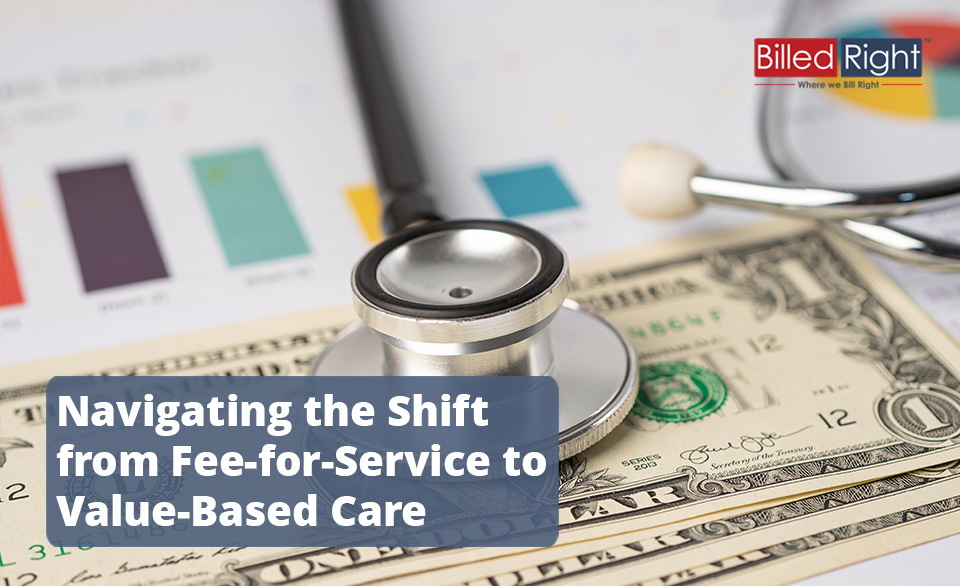Navigating the Shift from Fee-for-Service to Value-Based Care

Understanding Fee-for-Service vs. Value-Based Care
In today’s evolving healthcare landscape, understanding the differences between fee-for-service and value-based care models is crucial for healthcare professionals. Each model has distinct characteristics, implications for revenue cycle management, and patient outcomes.
Overview of Fee-for-Service Model
The fee-for-service (FFS) model is a traditional healthcare payment approach where providers receive compensation for each service rendered. In this model, healthcare providers are incentivized to deliver more treatments, tests, and procedures since reimbursement is based on the volume of care rather than the quality of care. This often leads to increased utilization of services, whether necessary or not, and can result in higher healthcare costs.
| Characteristics of Fee-for-Service Model | Impact on Healthcare |
|---|---|
| Payment based on services provided | Encourages quantity over quality |
| High billing complexity | Can lead to administrative burdens |
| Limited focus on patient outcomes | May neglect preventive care |
Understanding the limitations of the fee-for-service model is essential for those considering a shift towards alternative payment structures that prioritize value.
Introduction to Value-Based Care Model
Value-based care (VBC) aims to improve patient health outcomes while reducing healthcare spending. In this model, providers are compensated based on the quality and efficiency of the care they provide. Factors such as patient satisfaction, adherence to best practices, and successful health outcomes influence reimbursement levels.
This shift represents a fundamental change in how healthcare providers operate, focusing on preventive care, chronic disease management, and the overall patient experience. Successful implementation of value-based care has the potential to enhance patient satisfaction, lower costs, and improve health outcomes.
| Features of Value-Based Care Model | Benefits |
|---|---|
| Payment tied to patient outcomes | Enhances quality of care and patient satisfaction |
| Emphasis on preventive measures | Reduces long-term healthcare costs |
| Use of data analytics for performance tracking | Informs continuous improvement efforts |
Healthcare providers transitioning from fee-for-service to value-based care need to understand both the opportunities and challenges that this shift entails.
Transitioning to Value-Based Care
Transitioning from a fee-for-service model to a value-based care approach involves various challenges and necessitates effective strategies. Understanding these aspects is crucial for healthcare professionals looking to optimize their revenue cycle.
Challenges Faced in the Transition
The journey toward value-based care can present several hurdles for healthcare providers. Some of the major challenges include:
| Challenge | Description |
|---|---|
| Cultural Resistance | Healthcare providers may resist changing their established practices and adapting to new care models. |
| Data Management | Effective transition requires accurate data collection and management, which can be difficult without proper systems in place. |
| Financial Uncertainty | Leaders may face concerns about potential revenue losses during the transition period, especially if patient volume decreases. |
| Integration of Care | Coordinating care among multiple providers can be complex, leading to potential gaps in services. |
| Quality Metrics Assessment | Understanding and implementing quality metrics is essential but often challenging for providers transitioning to a new model. |
Transitioning from fee-for-service to value-based care demands an understanding of quality metrics in value-based care to gauge performance effectively.
Strategies for a Smooth Transition
To navigate these challenges, healthcare organizations can adopt several strategies:
| Strategy | Description |
|---|---|
| Continuous Education | Providing ongoing training and education for staff on value-based care practices and the importance of patient outcomes. |
| Technology Integration | Utilizing technology tools to streamline data management and reporting processes. |
| Collaborative Care Models | Fostering communication and collaboration among providers ensures coordinated care delivery, improving patient outcomes. |
| Financial Planning | Developing financial strategies to mitigate risks associated with transitioning to value-based care, including understanding financial risk in value-based care models. |
| Patient Engagement | Prioritizing patient communication and involvement, leading to greater satisfaction and adherence to care plans, essential for success in value-based care. Understand methods for tracking patient satisfaction in value-based care. |
Employing these strategies will aid healthcare professionals in effectively transitioning to value-based care while enhancing their revenue cycle management.





